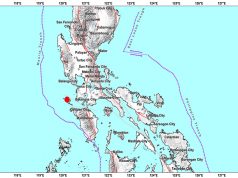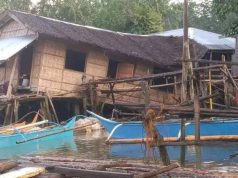State volcanologists raised the alert level of Taal Volcano several months after it was downgraded to “low level of unrest” following its historic eruption in January of last year.
The Philippine Institute of Volcanology and Seismology on Tuesday morning announced that the Batangas-based volcano is now on Alert Level 2, which means it is exhibiting an “increasing unrest.”
“Since 13 February 2021, Taal Volcano has been exhibiting increased unrest based on the following monitoring parameters,” it said in its daily volcano bulletin for Taal.
Phivolcs said that it has recorded a total of 886 shallow volcanic episodes since last month and a total of 141 low-frequency volcanic earthquakes.
It also observed that there was an increase of temperature and acidity in the Main Crater lake, as well as an ongoing slight ground deformation of the Taal Volcano Island.
“This means that there is probable magmatic activity that may or may not lead to an eruption,” it added.
Phivolcs is not yet recommending an evacuation but it reminded the public that the Taal Volcano Island remains a permanent danger zone.
Entry to the island, especially to the vicinities of the Main Crater Lake and the Daang Kastila fissure, remains strictly prohibited.
In a more detailed post, Phivolcs said that local government units are “advised to continuously assess previously evacuated barangays around Taal Lake for damages and road accessibilities and to strengthen preparedness, contingency, and communication measures in case of renewed unrest.”
“Residents of these barangays are advised to be always prepared, to keep calm and listen to information only from trusted or verified sources,” it added.
Following the announcement, the keyword “Taal” reached the top trending list of local Twitter as Filipinos expressed their anxieties and concerns on the alert level raise.
Please, not again, Taal. :'((
— Cedrick Reymonte Lubi (@CedrickReyLubi) March 9, 2021
Not BL related.
Moots please pray for my hometown. Taal Volcano is now on Alert Level 2. 🥺😩🙏🏻 pic.twitter.com/omrYLCfUHM— ꪗꫀꪀᧁ✨ (@yengxxiv) March 9, 2021
Oh no. Taal, please be calm 🙏 pic.twitter.com/cThamxYbMn
— 🐨🌞 (@vien_dcln) March 9, 2021
Taal Volcano’s status was downgraded to Alert Level 1 on March 19, 2020, two months after its eruption wherein Alert Levels 2, 3 and 4 were raised on the same day.
Phivolcs said there are five alert levels.
Alert Level 0 is the lowest tier in which Taal is “quiet.” This means there is “no foreseeable eruption.”
Alert Level 1 is the second lowest which signifies “low level seismicity, fumarolic, other activity.” It means that while there is “magmatic, tectonic or hydrothermal disturbance,” there is still “no eruption imminent.”
Alert Level 2, meanwhile, indicates that the following activities are observed:
“Low to moderate level of seismicity, persistence of local but unfelt earthquakes. Ground deformation measurements above baseline levels. Increased water and/or ground probe hole temperatures, increased bubbling at Crater Lake.”
This is interpreted by volcanologists as the following:
A) Probable magmatic intrusion; could eventually lead to an eruption.
B) If trend shows further decline, volcano may soon go to level 1
Alert Level 3 is when there is a “relatively high unrest” as “manifested by seismic swarms including increasing occurrence of low frequency earthquakes and/or harmonic tremor.”
There are also “sudden or increasing changes in temperature or bubbling activity” and that the “bulging of the edifice and fissuring may accompany seismicity.”
This also offers two interpretations: If the trend is of “increasing unrest,” then a “hazardous eruption is possible within days to weeks.” If the unrest is decreasing, however, the “volcano may soon go to level 2.”
Last month, Filipinos reminded each other to be vigilant after Phivolcs announced that they have monitored a slight increase in Taal Volcano’s seismic activity.
Increase in the acidity and temperature of the Main Crater Lake were observed as well.
Taal Volcano last erupted on Jan. 12, 2020, and left more than 30 people dead and thousands of Filipinos homeless.
Neighboring regions were also affected by its ashfall, including Metro Manila.
As of December last year, some nearby residents were still reported to experience the impact of the incident that has drastically affected their livelihoods and lifestyle, especially in the wake of the coronavirus pandemic.
RELATED: Throwback Tuesday: Filipinos recall how Taal Volcano’s historic eruption affected them a year ago










